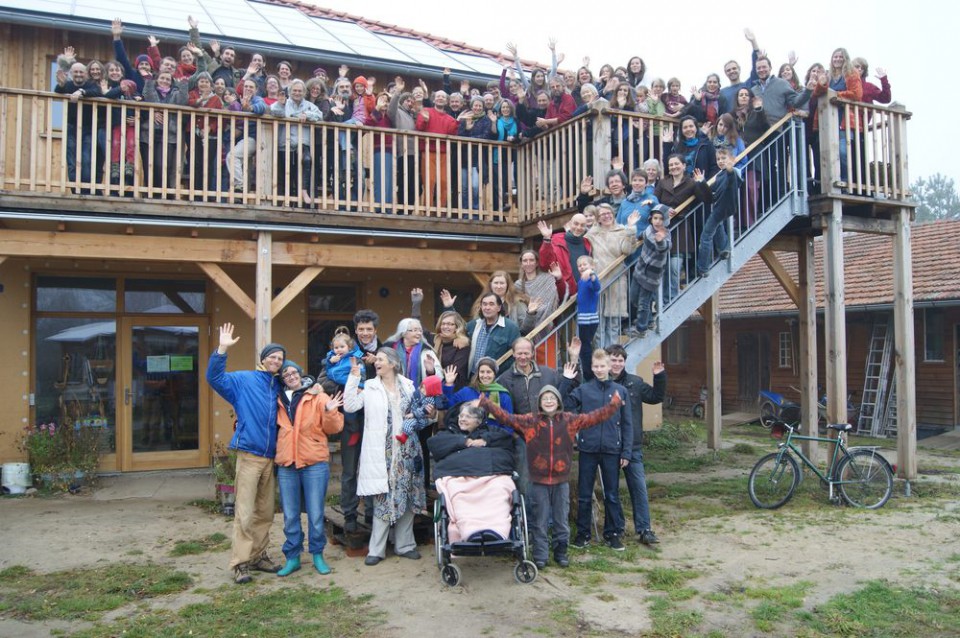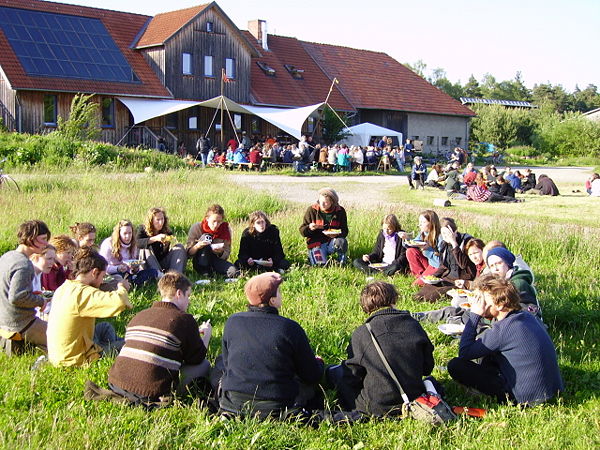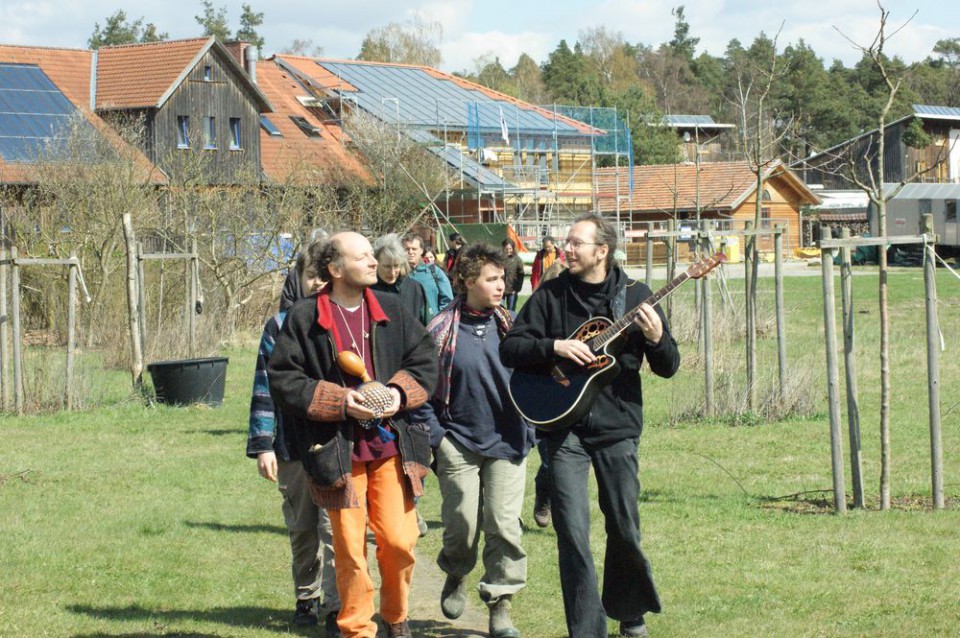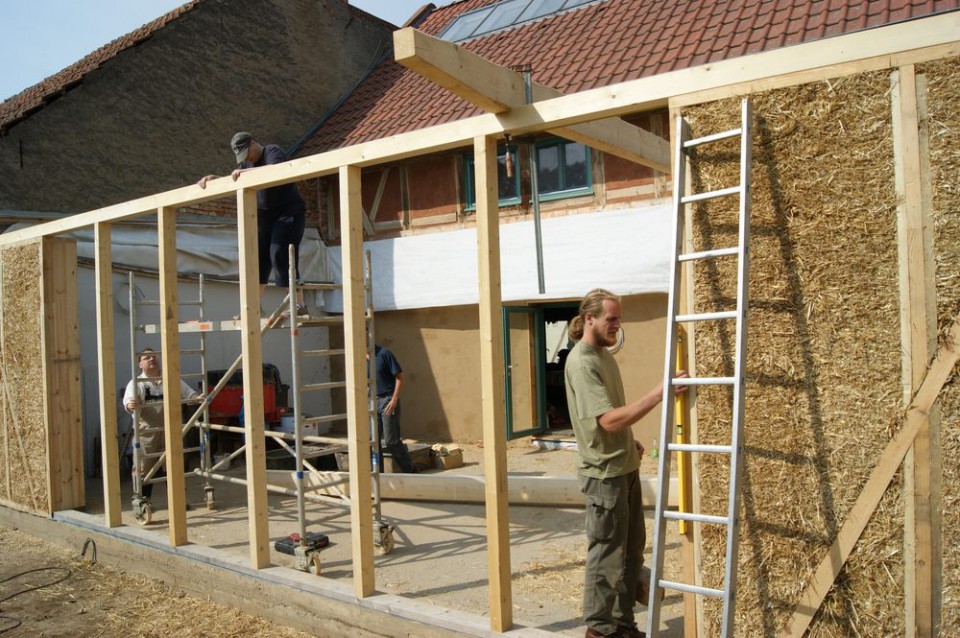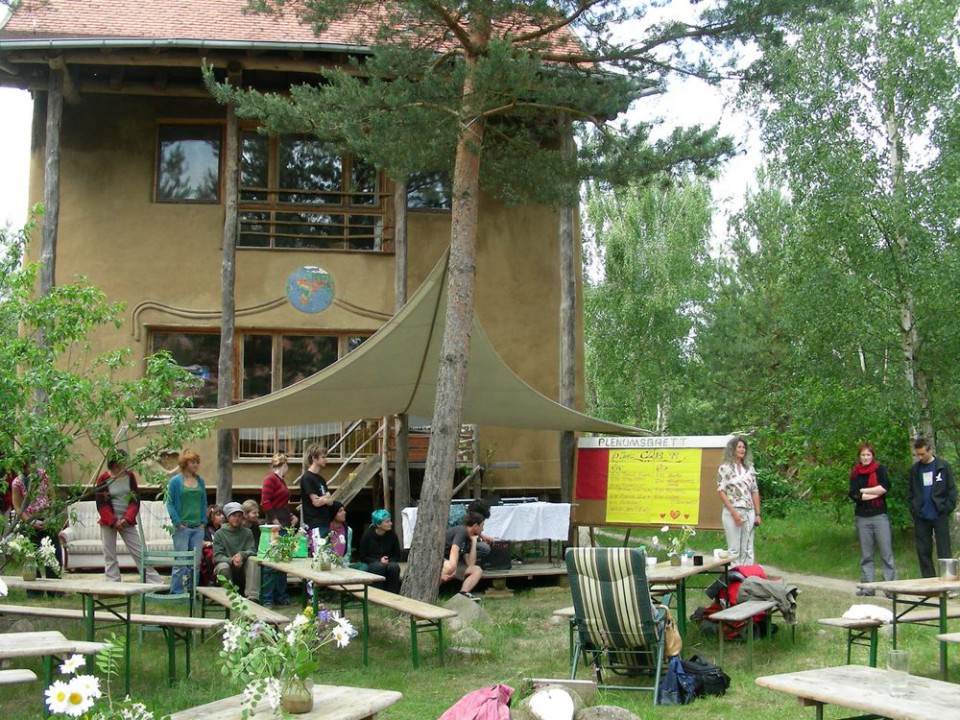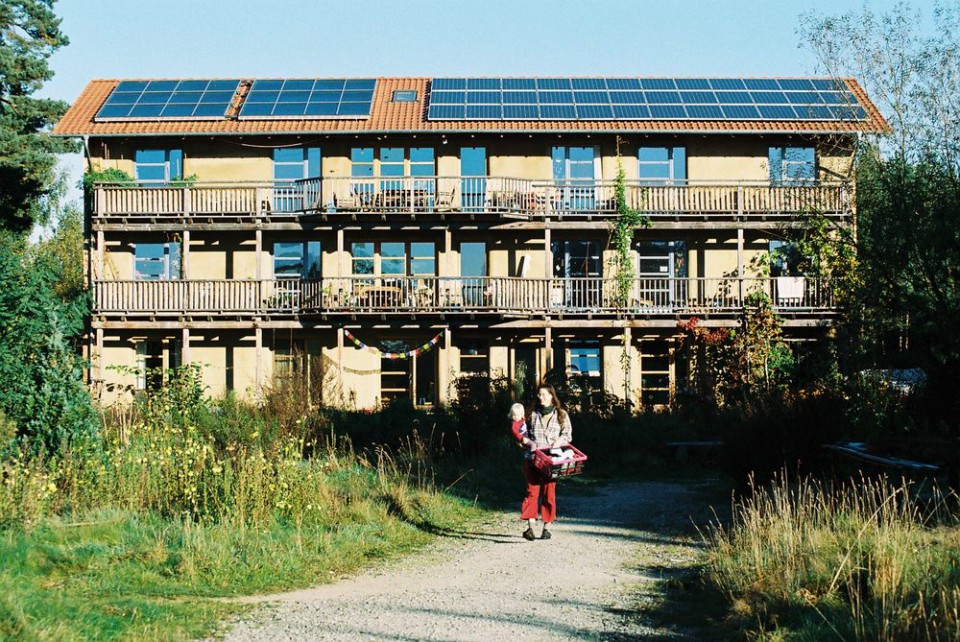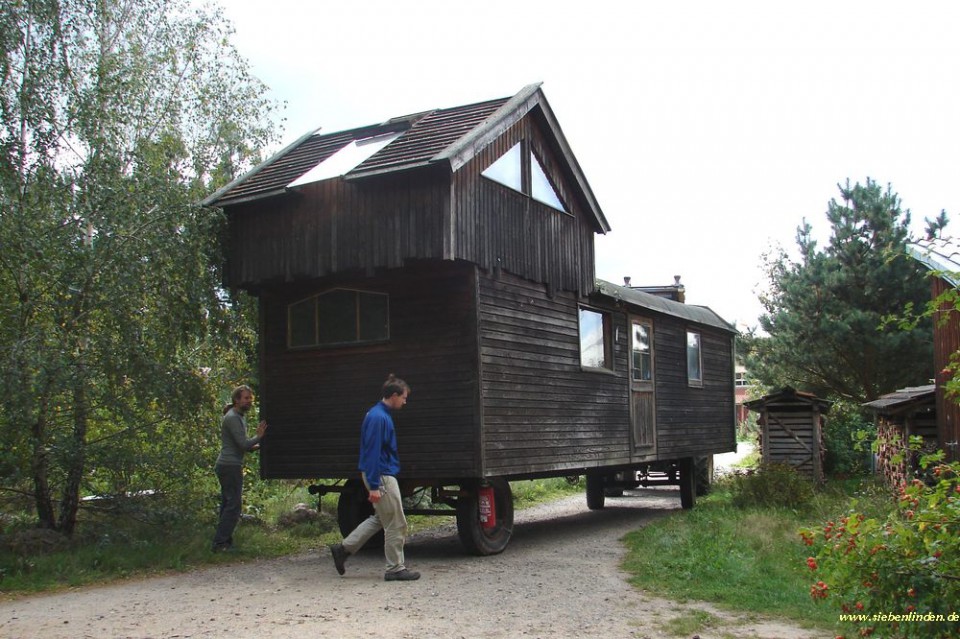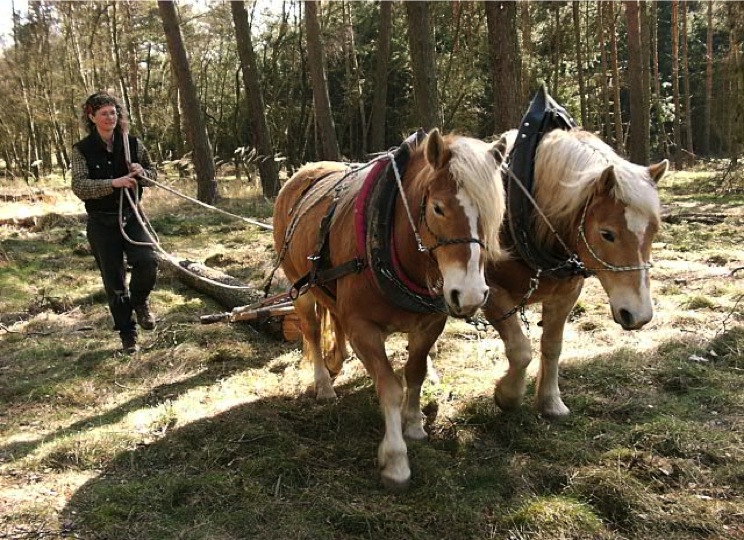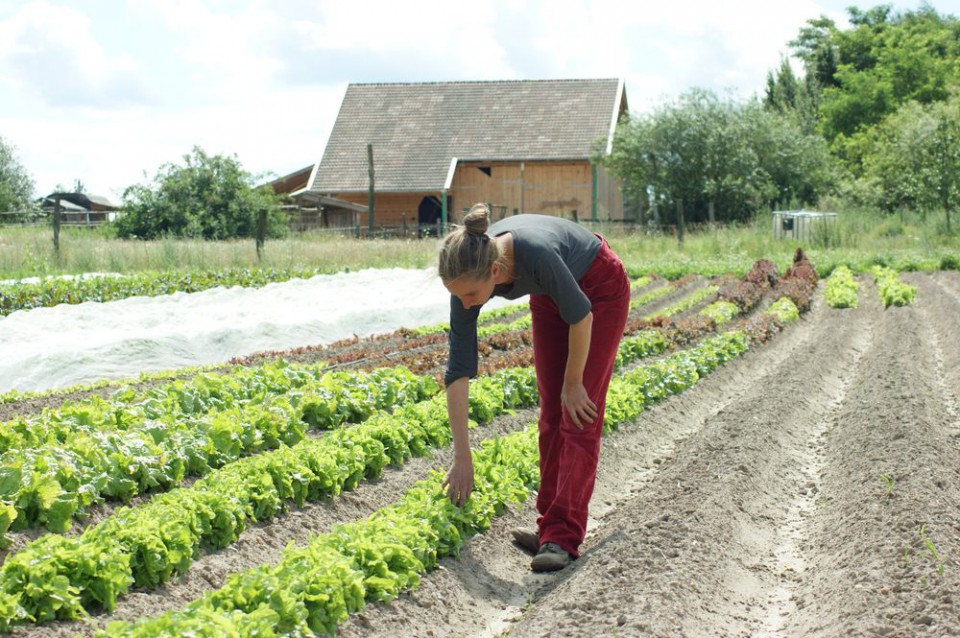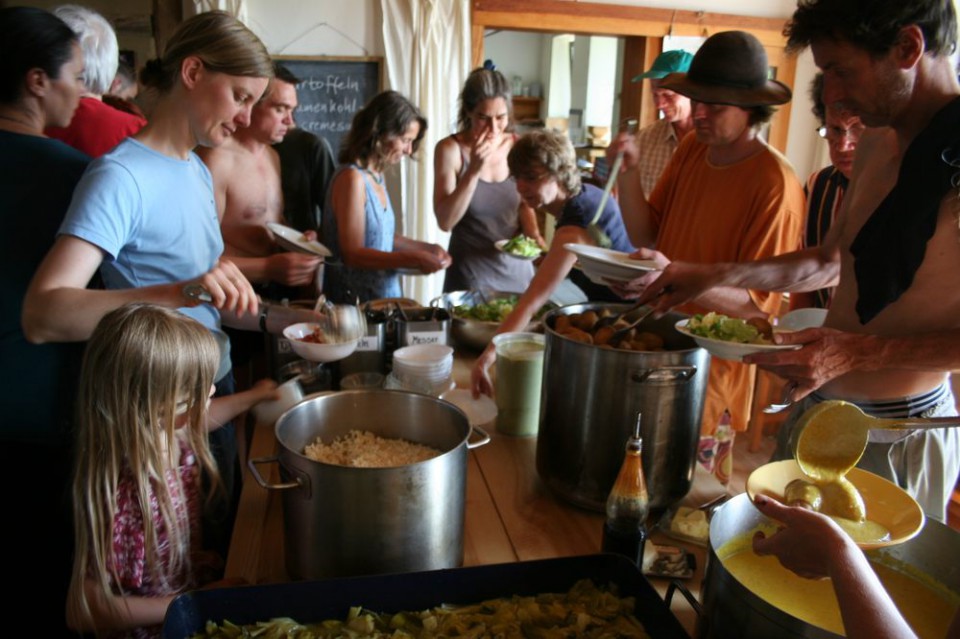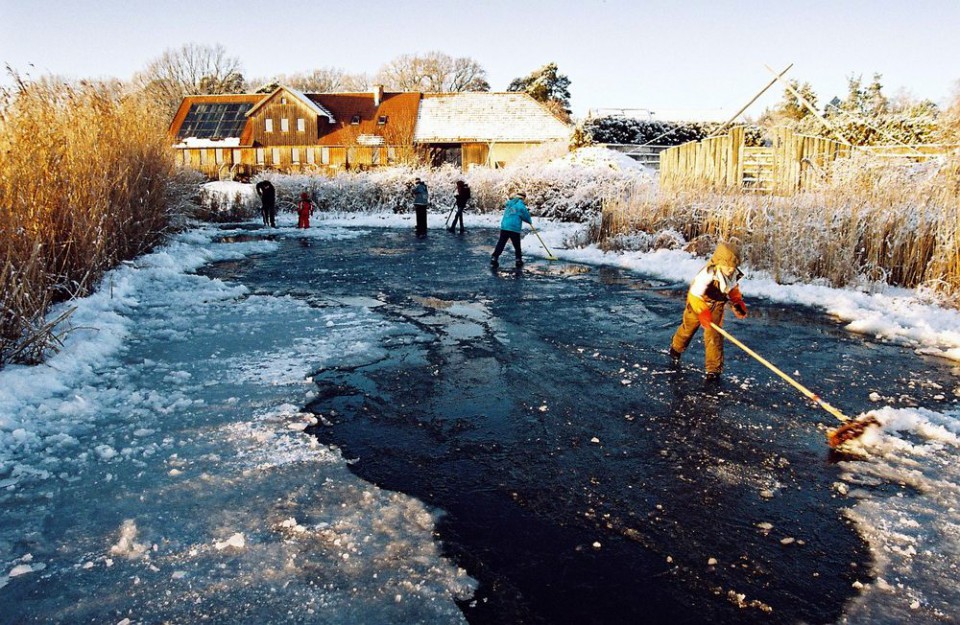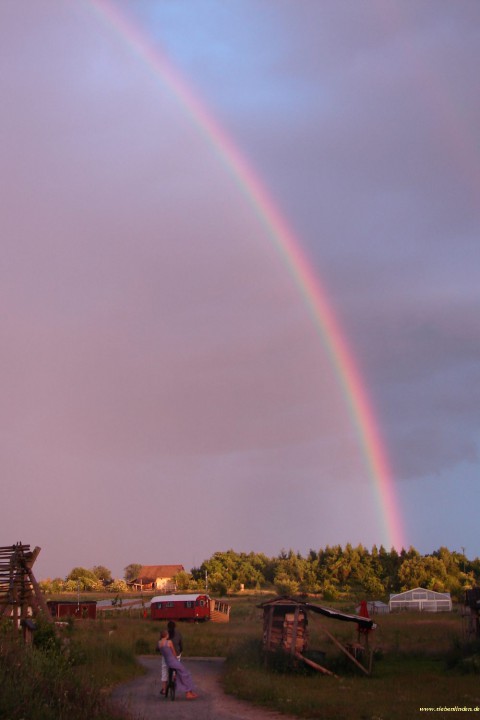Sieben Linden
Sieben Linden, named for seven linden trees on the land, is another ecovillage that sprouted in the fertile soil of the East after German reunification.
Founded in 1997, this off-grid community of about 100 adults and 40 children now occupies roughly 200 acres of farmland and pine plantation.
The community’s modest resource consumption and waste production, about 1/3 the German average, demonstrates that we can live within our home planet’s ecological boundaries—even if we live in the affluent world.
Sieben Linden focuses on closed energy and resource cycles; natural building with local straw, clay and timber; organic farming; and draft horsemanship for farming and forestry.
During my visit, Sieben Linden experienced the first death of one of its members. I was deeply impressed by the community’s holistic response to the death: how they treated the body, shared their grief, performed the funeral, integrated the children into the process, and how at this tender time in their community they included even me—a foreigner and English speaker who was in every way an outsider.
Official website (in English): http://www.siebenlinden.de/index.php?id=84&L=2
Sieben Linden Photo Gallery http://classic.siebenlinden.de/bildarchiv/
